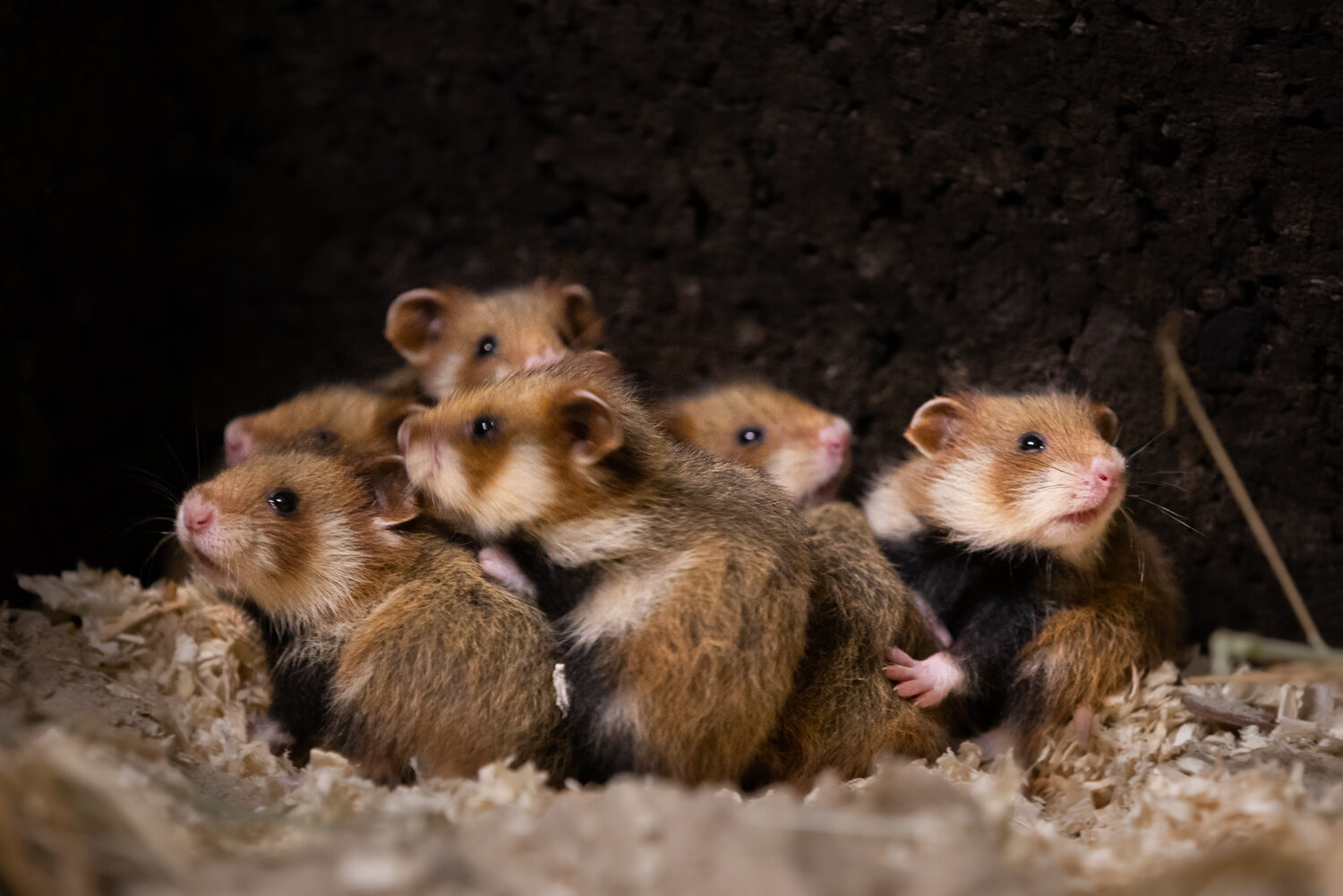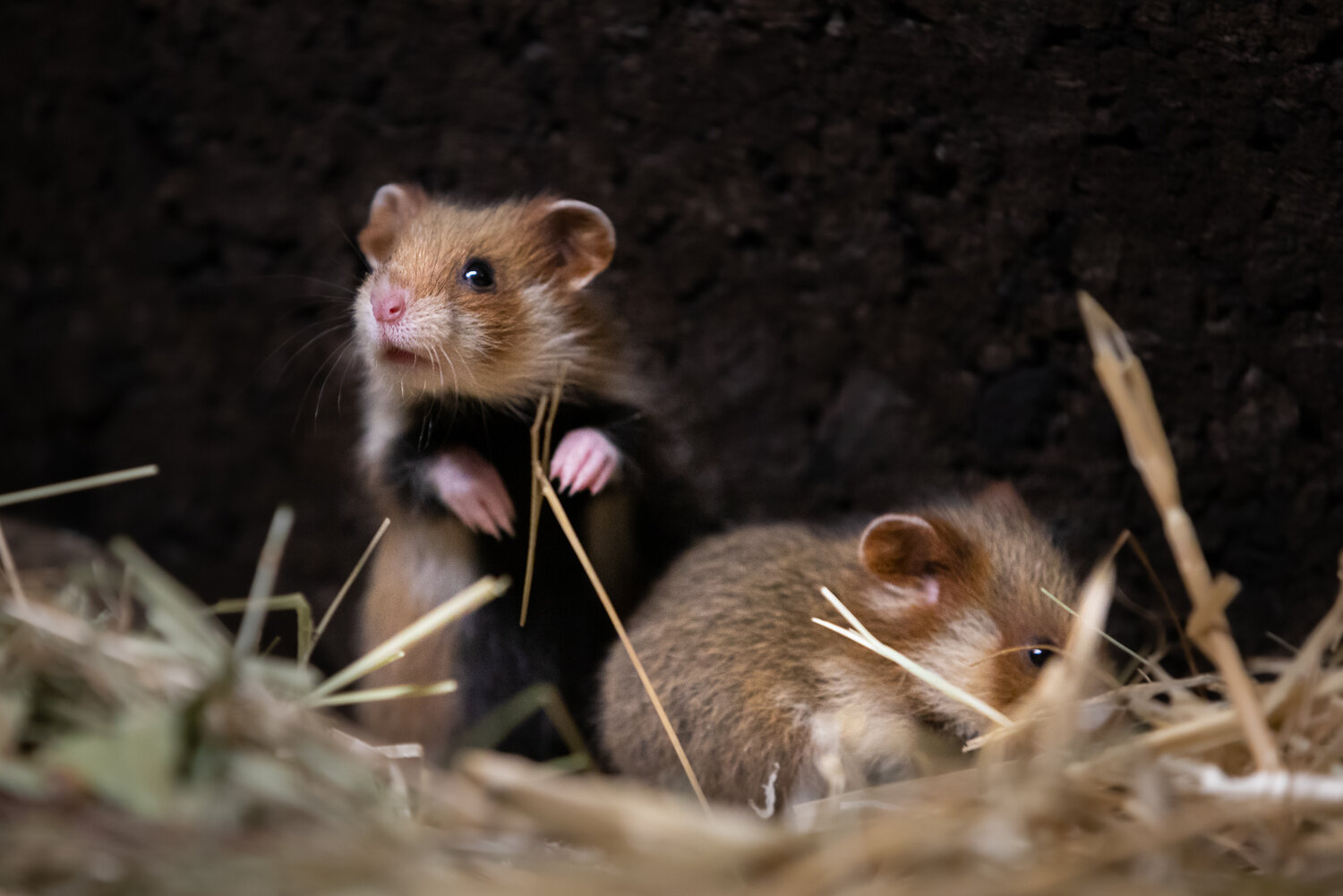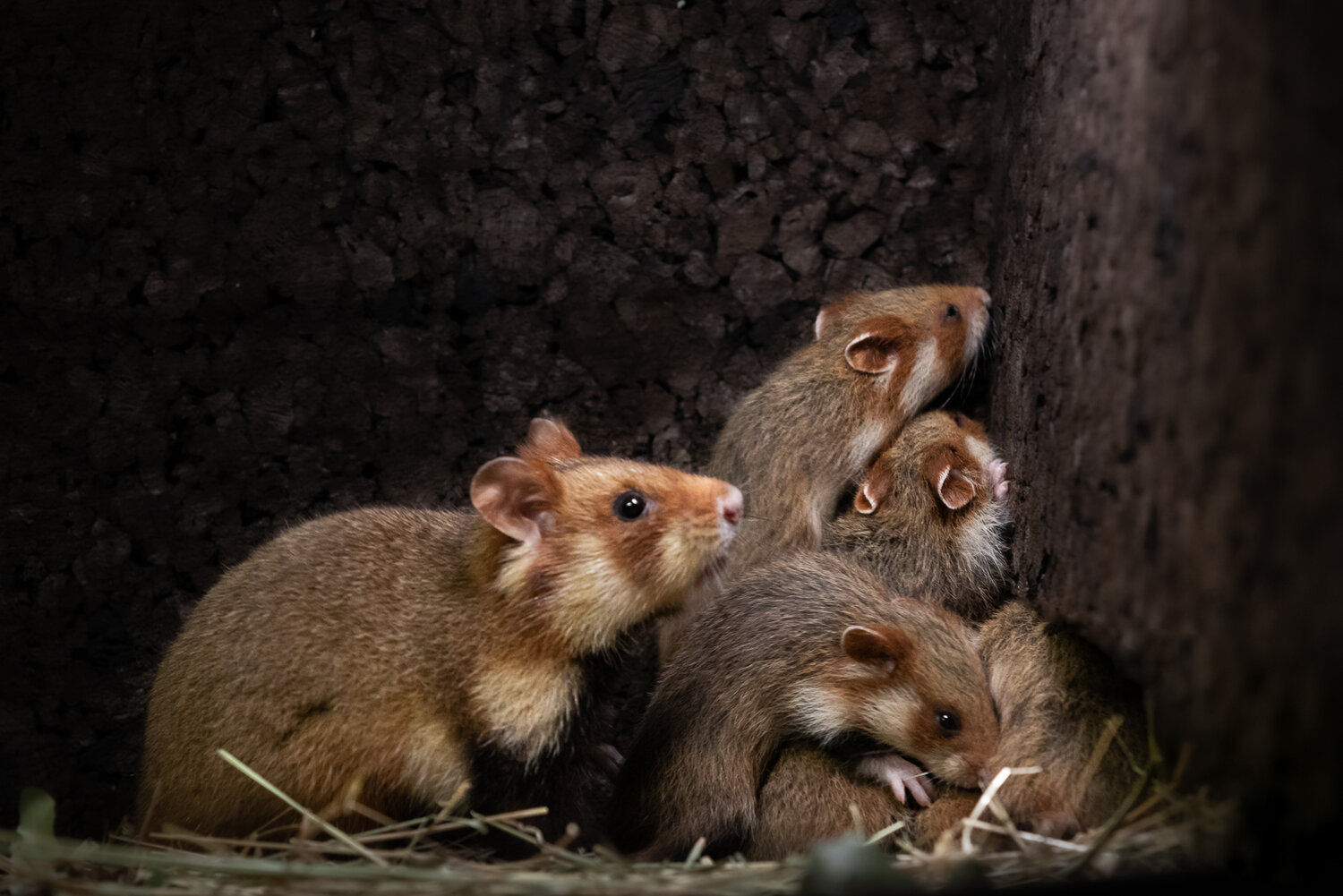Tierpark Berlin has launched a new project to further expand its commitment to protecting species in their natural habitats. With its recently completed breeding and research station for the European hamster, the Tierpark is helping to ensure the survival of this native German rodent. All European hamster pups born in Berlin will eventually be released into suitable habitats in the hope that this will prevent the extinction of the increasingly threatened species. Just a few months after the start of the project, Tierpark Berlin is delighted to announce that the first babies have already been born.
Most people in Europe probably only know the more exotic hamster species that are kept as pets, but there is in fact a wild species native to this continent: the larger European hamster, which is roughly the size of a guinea pig. Sadly, however, this rodent is currently one of the most endangered mammals in Germany – and is even considered extinct in some German states. “It’s not only in the rainforests of South America or the savannahs of Africa that we find beautiful mammals in need of protection, human activity is also pushing species to the brink of extinction right here at home,” says Zoo and Tierpark Director Dr Andreas Knieriem. “If we don’t act now to protect the European hamster, it will most likely be wiped out within the next three decades,” he adds. “And it will probably take many other species along with it.” Scientists estimate that there are only 10,000 to 50,000 European hamsters still living wild in Germany. The greatest threat to their survival is intensive agriculture, particularly the cultivation of energy crops instead of cereals, early and more efficient harvesting, and the use of chemical agents to control rodents. In order to survive its long hibernation, the European hamster needs to collect around two to four kilograms of cereal grains and other seeds over the summer months to store in its underground burrow system. But this is becoming increasingly difficult on such intensively managed land.
Seven adult European hamsters moved into the Tierpark’s new European Hamster Station in May 2022. On 1 August, keepers discovered seven babies just a few days old in the nest of a female they had named Helga (approx. 1.5 years of age). The pups have been developing very well and all survived the first three weeks, which is quite a critical time. “At birth, European hamsters are blind and deaf and not even the size of a human’s little finger,” says Tierpark curator Maren Siebert. “But they grow incredibly fast and are ready to go their own way after only five weeks or so.” Their release into the wild is expected to take place next spring in the area around Göttingen. Experts from the European hamster conservation group AG Feldhamsterschutz in the state of Lower Saxony are lending their knowledge to the project. They know, for example, that areas where alfalfa is cultivated in regular strips are particularly hamster-friendly habitats. They also encourage farmers to leave strips of grain plants when harvesting in order to provide food and cover for the European hamster. Farmers participating in the project receive compensation for any crop losses and the additional effort involved.
European Hamster Station | Breeding and research for species conservation
The new European Hamster Station – which is located on the Tierpark’s farm and cannot be accessed by regular visitors – will not only enable Tierpark Berlin to breed the threatened European hamster, it will also give scientists the opportunity to observe the rodents’ behaviour. “It’s great for our team to be able to put our expertise in the keeping and breeding of endangered animals to direct use and help save a species in its natural habitat,” says Christian Kern, Zoological Director of Zoo and Tierpark Berlin. “Many people are not aware that a significant part of our work takes place behind the scenes. On this project, we are pleased to be working together with other experts in conservation and research to help save the European hamster.” Eighteen of the endangered rodents are currently living at the European Hamster Station, which has space for more than 50. With their Berlin World Wild conservation programme, Zoo and Tierpark Berlin are working to protect several threatened species around the globe. From next year, funding will be increased to €2 million – meaning the programme will almost double in size in 2023.
By the way: In future, Tierpark visitors will also be able to see the new European Hamster Station on special guided tours.


